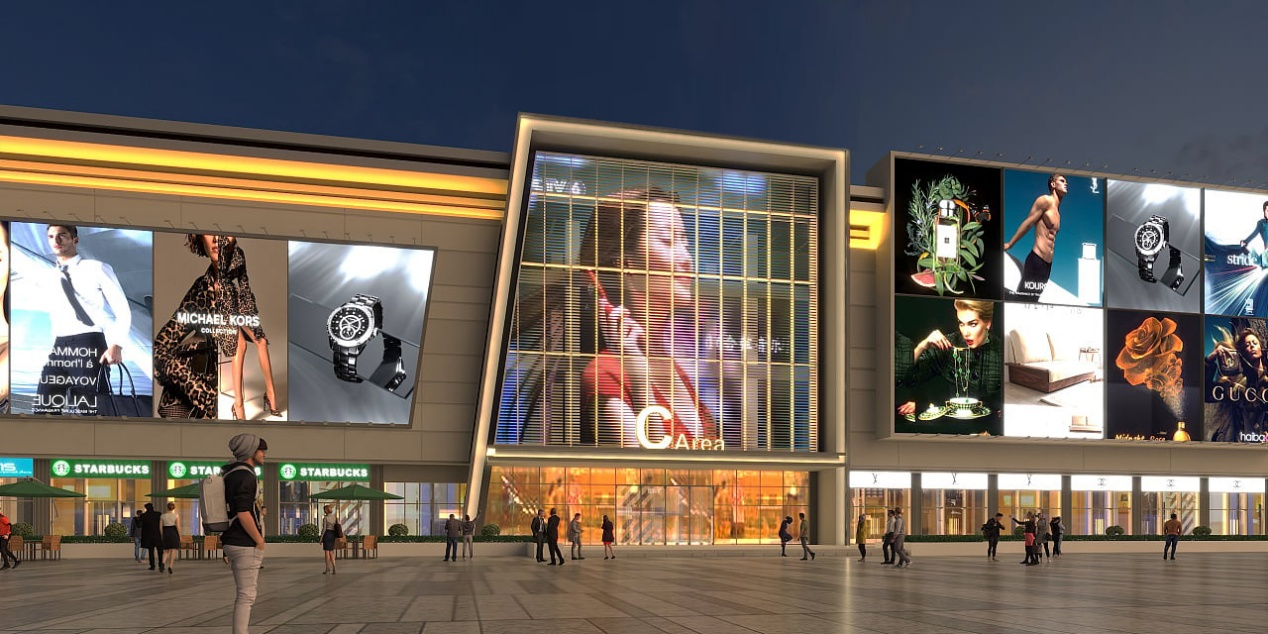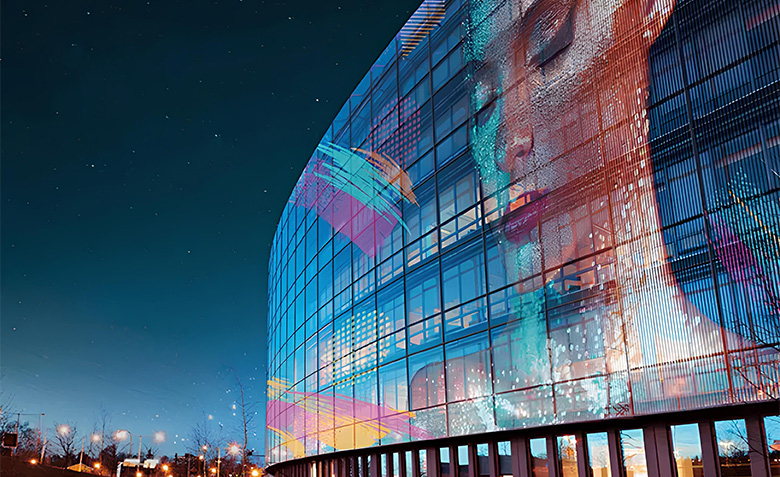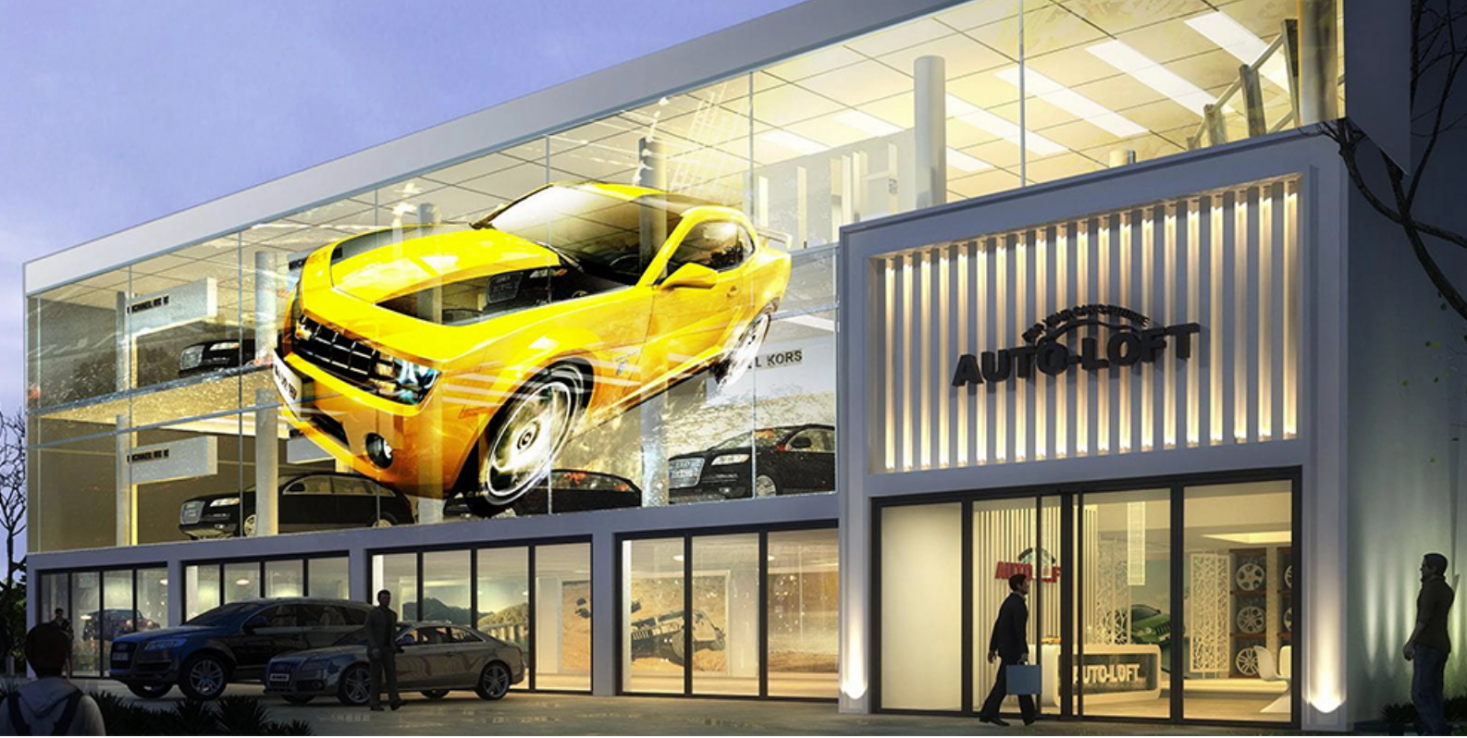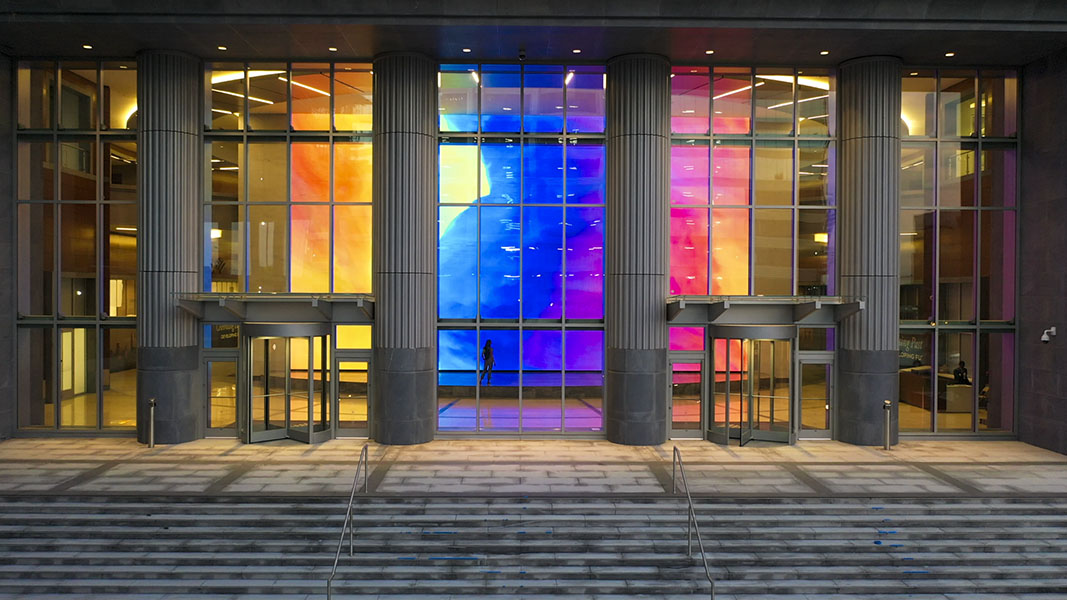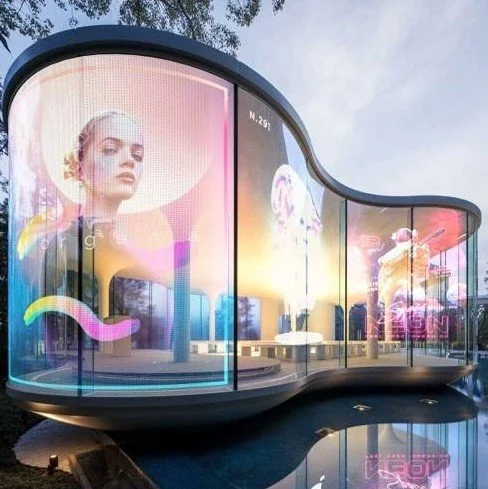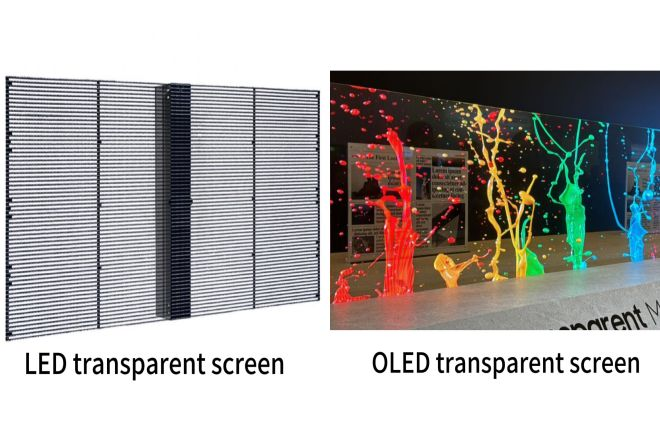LED Film Display: Transforming Transparent Visual Communication in 2025 — The New Era of Architectural Media Technology
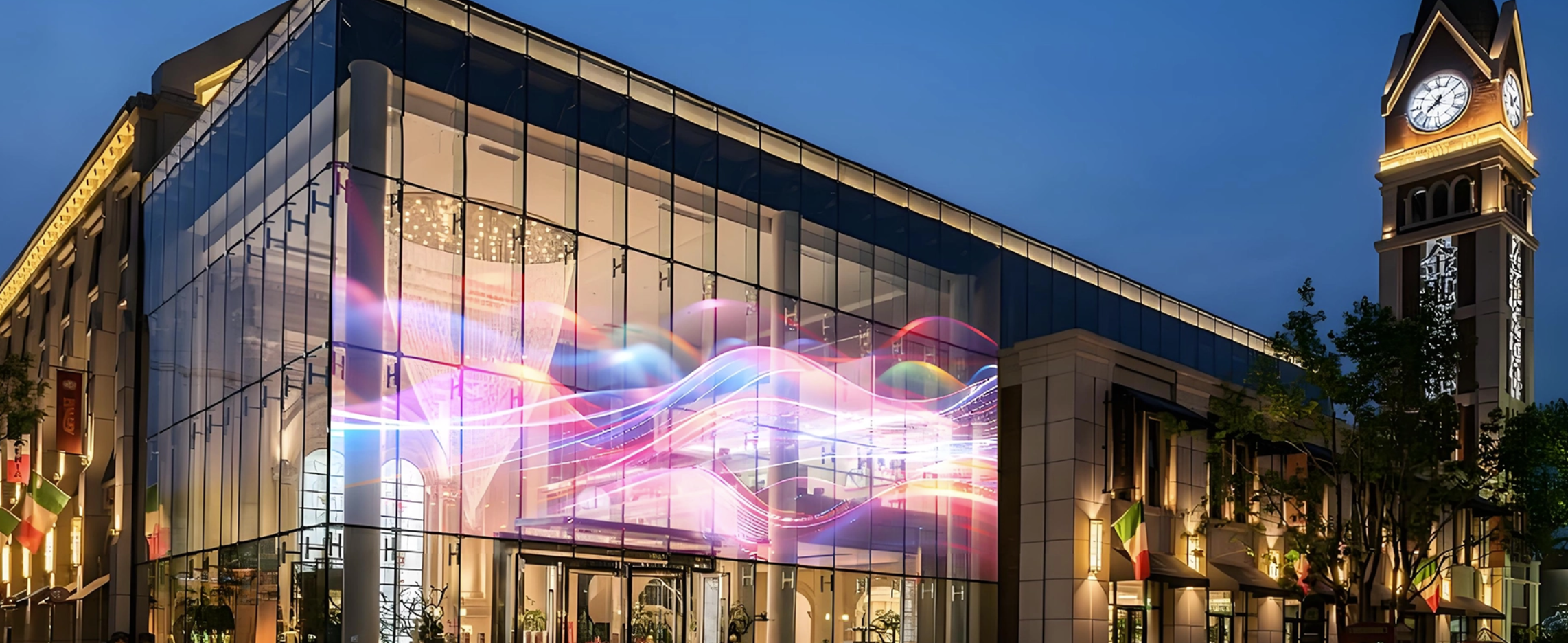
1. Understanding LED Film Display Technology AnLED Film Displayis an ultra-thin, transparent LED visual panel designed to be directly applied onto glass surfaces. Unlike conventional LED screens that rely on rigid cabinets, heavy steel structures, or large modules, LED film uses a flexible, high-transparency PCB film embedded with micro-LEDs. Key Technical Features
2. Why LED Film Became a Global Trend in 2025 The accelerated market adoption of LED film in 2025 is driven by multiple global factors—technological, architectural, economic, and creative. 2.1 Explosion of Glass Architecture Worldwide New commercial buildings increasingly feature floor-to-ceiling glass designs. LED film transforms these surfaces into transparent media displays without altering structural integrity. 2.2 Demand for Lightweight and Non-Intrusive Digital Displays Modern architecture discourages heavy equipment and bulky frames. LED film’s cabinet-free design is perfect for light-load structures. 2.3 Post-Pandemic Retail Reinvention Brands seek eye-catching storefronts to attract foot traffic, and LED film creates dynamic retail windows while preserving visibility inside the store. 2.4 The Rise of Transparent Visual Aesthetics Consumers prefer visuals that blend with their environment rather than dominate it. LED film provides premium transparency and minimal visual obstruction. 2.5 Corporate Digital Transformation Smart offices and enterprise headquarters upgrade their visitor experience using transparent glass displays capable of branding, signage, and real-time information. 2.6 Cost Efficiency and Faster Deployment LED film requires less labor, lighter logistics, and minimal structural work—making it one of the most cost-effective display solutions in 2025.
3. How LED Film Works: Engineering Behind Transparency LED film uses a transparent PCB film (flexible or semi-rigid) where micro-LEDs are mounted in vertical or horizontal strips. These strips maintain optical gaps that allow natural light to pass through, resulting in true transparency rather than semi-opaque diffusion. Transparent LED Film Structure
4. Top LED Film Applications in 2025 4.1 Retail Storefront Windows Retail brands are using LED film to bring life to shopfront glass without blocking interior visibility. It creates a futuristic interactive window while keeping the store open and bright.
4.2 Glass Curtain Walls & Building Facades LED film enables building surfaces to function as transparent media walls. Architects love this because the display blends with the building when turned off.
4.3 Airports, Train Stations & Public Transport Hubs Transportation authorities are adoptingLED filmfor:
5.3 Ultra-Thin and Lightweight Perfect for projects where equipment load and structural limitations are a concern. 5.4 Flexible Cutting and Shape Customization Some films can be trimmed for:
6.2 LED Film vs Transparent LCD
7. The Global Growth of LED Film in 2025
7.1 Major Markets Experiencing Fast Adoption
11. Conclusion: Why LED Film Is the Defining Transparent LED Technology of 2025 LED filmtechnology has redefined what transparent displays can achieve. Its combination of high transparency, structural flexibility, lightweight design, strong brightness performance, and effortless installation has made it the preferred digital signage solution in retail, transportation, architecture, and corporate environments. As brands and building designers continue to prioritize openness, minimalism, and immersive digital experiences, LED film from EnvisionScreen stands at the forefront—leading the transformation of glass surfaces into intelligent visual media. LED film is not just a trend; it is the future of transparent LED display solutions, and 2025 marks the beginning of its global dominance.

In 2025, the global LED display industry reached a significant turning point as businesses, architects, and retail brands accelerated their transition toward transparent digital technologies. Among the many innovations dominating headlines and industry exhibitions,LED Film Displays—also known as Transparent LED Film, LED Adhesive Film, or Flexible LED Film Screens—have become one of the most talked-about display solutions worldwide. This technology offers a rare combination of architecture-friendly design, lightweight engineering, and high-impact digital content performance, making it the preferred choice for modern commercial spaces that increasingly depend on glass façades and open visual environments. As companies pursue more efficient, creative, and structurally flexible display solutions, LED film has emerged as a defining technology for the future of transparent digital signage. This news article provides a comprehensive, in-depth analysis of LED film’s rise in 2025, explaining why it has become a global trend, how businesses are adopting it, and what makes EnvisionScreen a leading supplier in this fast-growing category.
1. Understanding LED Film Display Technology AnLED Film Displayis an ultra-thin, transparent LED visual panel designed to be directly applied onto glass surfaces. Unlike conventional LED screens that rely on rigid cabinets, heavy steel structures, or large modules, LED film uses a flexible, high-transparency PCB film embedded with micro-LEDs. Key Technical Features
- Ultra-thin structure (typically 2.0 mm)
- High transparency (90%–98%)
- Lightweight design (3–5 kg/m²)
- Optional flexibility for curved glass
- Self-adhesive installation
- Wide viewing angle and high brightness
- Low heat emission and low power usage
2. Why LED Film Became a Global Trend in 2025 The accelerated market adoption of LED film in 2025 is driven by multiple global factors—technological, architectural, economic, and creative. 2.1 Explosion of Glass Architecture Worldwide New commercial buildings increasingly feature floor-to-ceiling glass designs. LED film transforms these surfaces into transparent media displays without altering structural integrity. 2.2 Demand for Lightweight and Non-Intrusive Digital Displays Modern architecture discourages heavy equipment and bulky frames. LED film’s cabinet-free design is perfect for light-load structures. 2.3 Post-Pandemic Retail Reinvention Brands seek eye-catching storefronts to attract foot traffic, and LED film creates dynamic retail windows while preserving visibility inside the store. 2.4 The Rise of Transparent Visual Aesthetics Consumers prefer visuals that blend with their environment rather than dominate it. LED film provides premium transparency and minimal visual obstruction. 2.5 Corporate Digital Transformation Smart offices and enterprise headquarters upgrade their visitor experience using transparent glass displays capable of branding, signage, and real-time information. 2.6 Cost Efficiency and Faster Deployment LED film requires less labor, lighter logistics, and minimal structural work—making it one of the most cost-effective display solutions in 2025.
3. How LED Film Works: Engineering Behind Transparency LED film uses a transparent PCB film (flexible or semi-rigid) where micro-LEDs are mounted in vertical or horizontal strips. These strips maintain optical gaps that allow natural light to pass through, resulting in true transparency rather than semi-opaque diffusion. Transparent LED Film Structure
- Micro-LED emitters
- Transparent flexible PCB film
- Adhesive layer for glass bonding
- Driving ICs and wiring paths
- External control system
- Cloud-based CMS
- Local media players
- Mobile device scheduling
- Real-time brightness adjustment
- Remote content updates
4. Top LED Film Applications in 2025 4.1 Retail Storefront Windows Retail brands are using LED film to bring life to shopfront glass without blocking interior visibility. It creates a futuristic interactive window while keeping the store open and bright.
4.2 Glass Curtain Walls & Building Facades LED film enables building surfaces to function as transparent media walls. Architects love this because the display blends with the building when turned off.
4.3 Airports, Train Stations & Public Transport Hubs Transportation authorities are adoptingLED filmfor:
- Wayfinding
- Digital advertising
- Passenger information
- Real-time notifications
- Display company branding
- Show welcome messages
- Present announcements
- Enhance interior design
- Indoor brightness: 800–1500 nits
- Semi-outdoor / outdoor brightness: 3500–4000 nits
5.3 Ultra-Thin and Lightweight Perfect for projects where equipment load and structural limitations are a concern. 5.4 Flexible Cutting and Shape Customization Some films can be trimmed for:
- Curved glass
- Irregular windows
- Special shapes
|
Feature |
LED Film |
Cabinet Transparent LED |
|
Weight |
Very light |
Heavy |
|
Transparency |
High |
Medium |
|
Installation |
Adhesive |
Steel structure |
|
Aesthetics |
Nearly invisible |
Noticeable frame |
|
Flexibility |
High |
Low |
|
Ideal For |
Glass walls, retail |
Large outdoor ads |
|
Brightness |
Very high |
Medium |
|
Sunlight visibility |
Excellent |
Poor |
|
Transparency |
High |
Lower |
|
Feature |
LED Film |
Transparent LCD |
|
Flexibility |
Yes |
No |
|
Maintenance |
Easy |
Complex |
|
Cost |
Lower |
Higher |
- Middle East (architectural façades, luxury retail)
- Europe (heritage buildings requiring non-invasive displays)
- North America (corporate upgrades, airports)
- Southeast Asia (shopping malls, transport hubs)
- China & South Korea (smart buildings and design-driven retail)
- P1.5–P3 for close-range viewing
- P3–P5 for retail windows
- P6–P10 for large façades
- Smart windows
- Energy management systems
- IoT sensors
11. Conclusion: Why LED Film Is the Defining Transparent LED Technology of 2025 LED filmtechnology has redefined what transparent displays can achieve. Its combination of high transparency, structural flexibility, lightweight design, strong brightness performance, and effortless installation has made it the preferred digital signage solution in retail, transportation, architecture, and corporate environments. As brands and building designers continue to prioritize openness, minimalism, and immersive digital experiences, LED film from EnvisionScreen stands at the forefront—leading the transformation of glass surfaces into intelligent visual media. LED film is not just a trend; it is the future of transparent LED display solutions, and 2025 marks the beginning of its global dominance.
Post time: Nov-22-2025

